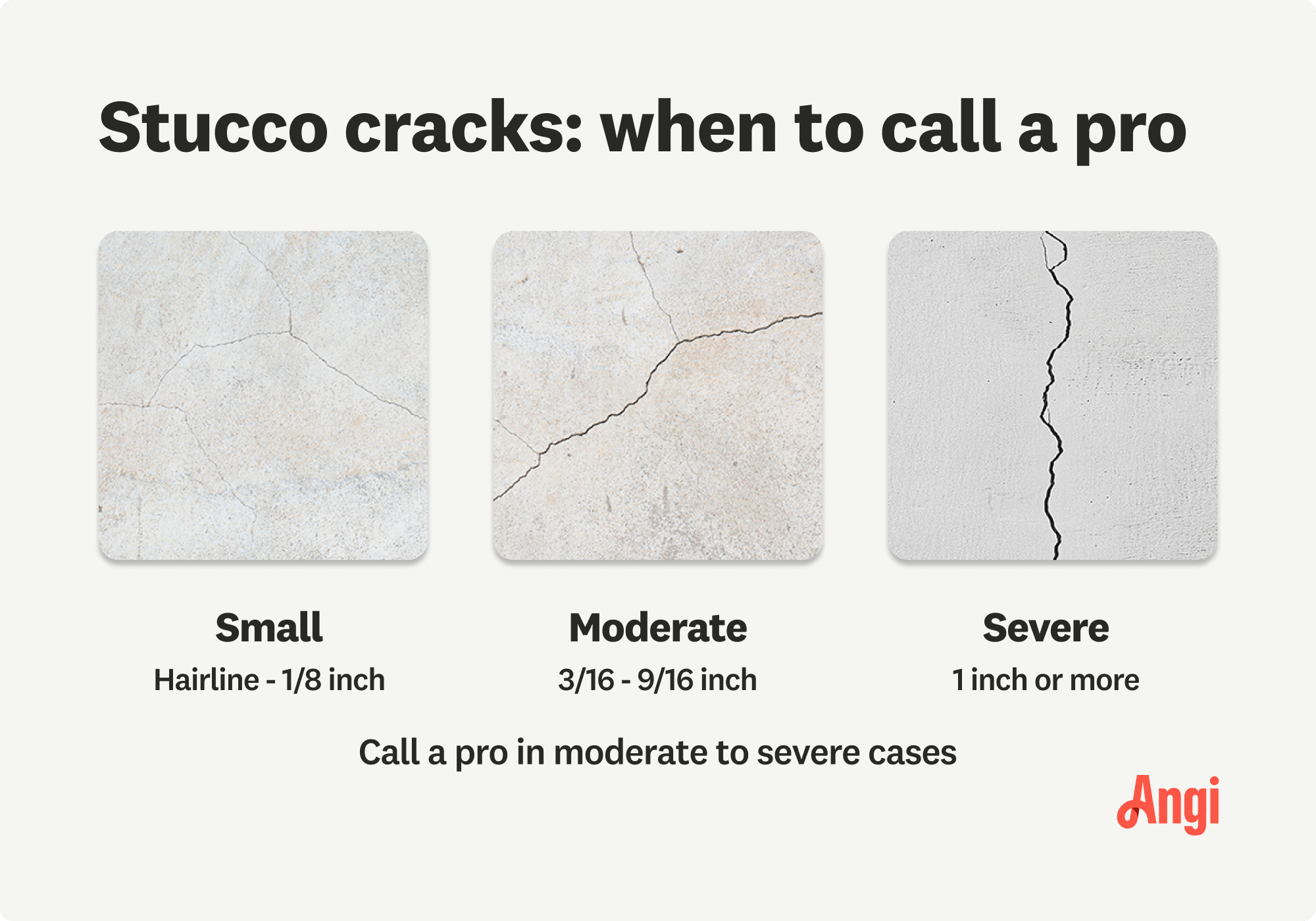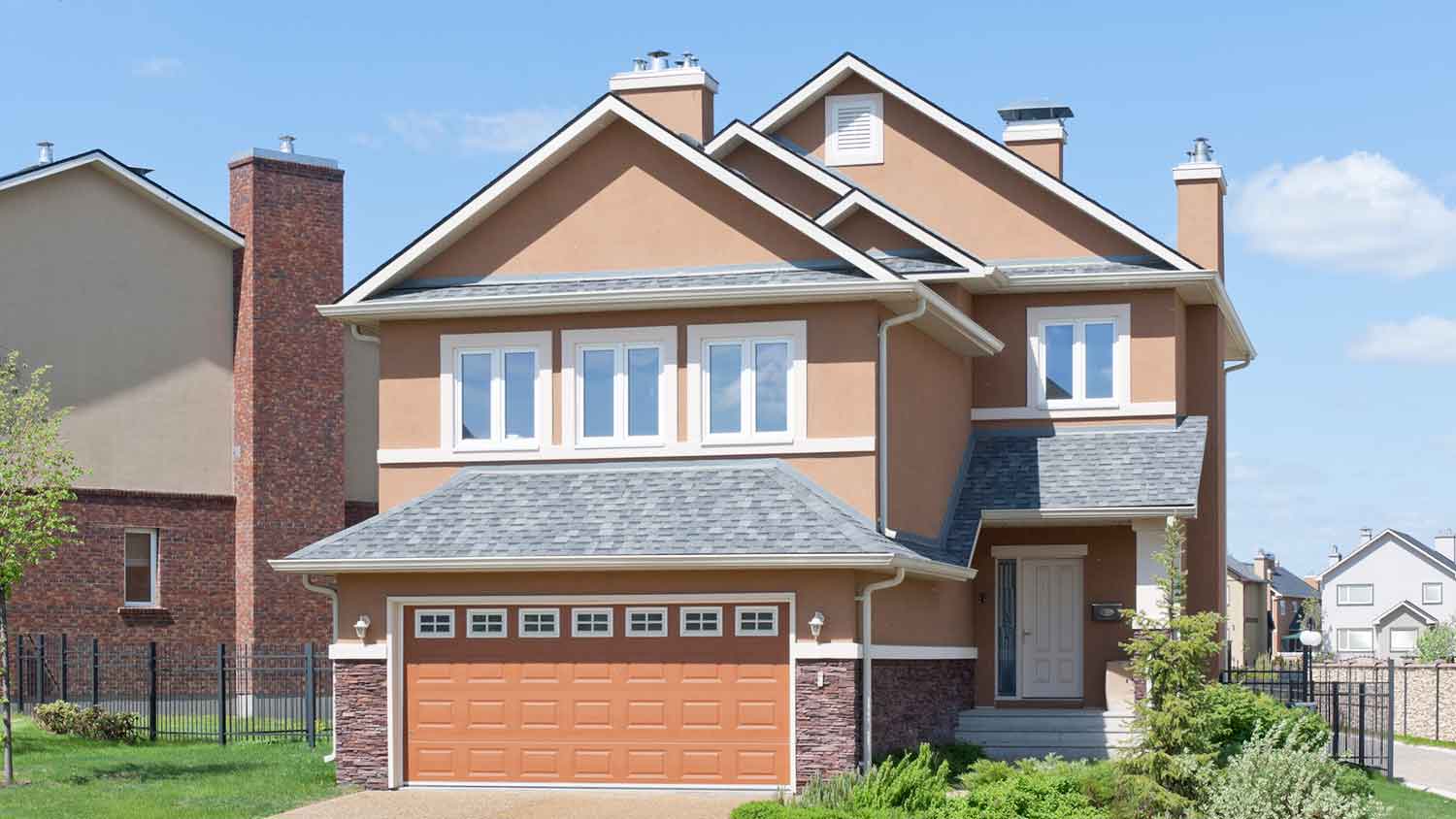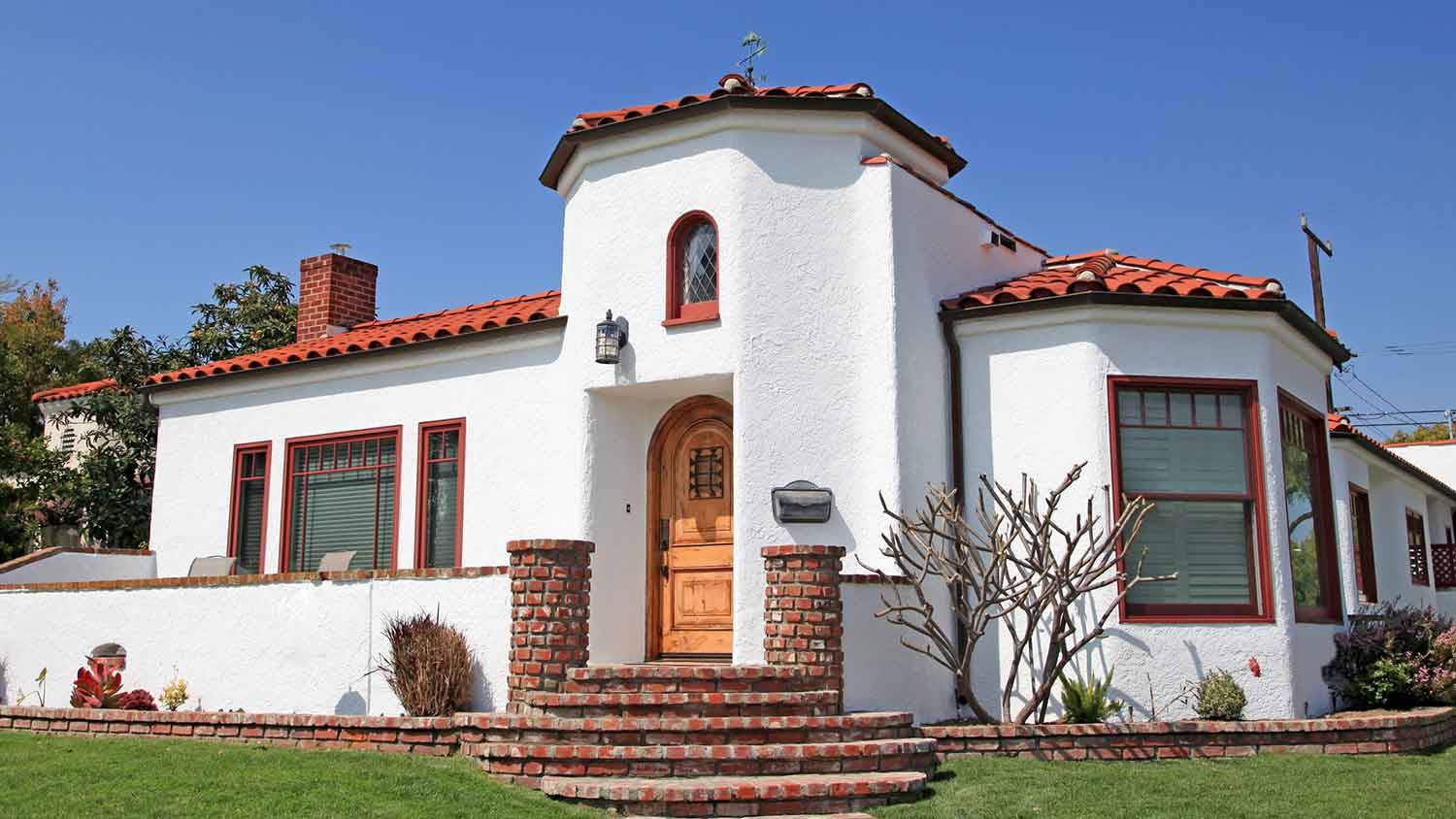
Get transparent stucco inspection cost info. Learn what impacts price, how to save, and what to expect before hiring a pro for your stucco inspection.
Take a crack at keeping your stucco in great shape


Stucco cracks can be caused by improper application, a shifting foundation, thermal expansion and contraction, and moisture intrusion.
Hairline cracks under 1/16 of an inch can be easily patched and are not cause for concern.
Larger cracks can lead to water damage of the stucco and exterior walls, peeling or lifting stucco, mold growth, and more.
Stucco’s classic aesthetics and long lifespan make it a popular siding choice for homes across the U.S. This mix of Portland cement, sand, and water is known for its durability, but it can also be prone to cracking, which may be a sign of structural issues with your home. We explore how and why stucco cracks, when you should worry about your stucco cracking, and how to prevent stucco cracks.

Stucco tends to crack in predictable ways, with three main types of cracks being most common: hairline, spiderweb, and diagonal. Cracks can have different causes and repair methods, and aren’t always a cause for concern.
Hairline cracks are less than 1/16-inch wide and do not usually indicate a serious problem with your home’s structural integrity. These cracks can be easily patched and, if they don’t reappear after repair, aren’t a cause for concern.
These cracks get their name from their spider web-like appearance and are wider than hairline cracks. Although they generally don’t signal a problem with your foundation, they do need to be repaired promptly to prevent water intrusion and widening cracks.
Diagonal cracks may appear around doors and windows or near the foundation and should be assessed by a professional, as they may indicate significant foundation shifting. These cracks are typically larger than 1/8 of an inch and will grow in length and width over time.
These cracks appear in the shape of a grid, with perpendicular cracks appearing in regular intervals. Cross-pattern cracks result from improper installation of the metal lath structure under the stucco.
The most common causes of stucco cracks are improper application and foundation shifting. A number of installation problems can cause cracking, including incorrectly installed metal lath, too much or too little water in the stucco mix, and stucco layers that are too thick or thin. Slight foundation settling can cause hairline cracks, but wider cracks result from significant foundation shifts.
Homeowners need to manage moisture to protect the longevity of their siding, which is where weather-resistant barriers come into play. Professional installation, especially with stucco, is essential for preventing cracks as well as keeping the foundation protected.

Stucco can increase your home’s value, but only if it’s in good condition and doesn’t show signs of serious structural settling or shifting. Any crack wider than 1/16 of an inch should be evaluated by an experienced professional who repairs stucco, as it may indicate significant foundation settling or problems with the stucco installation. While hairline cracks aren’t a cause for concern, you’ll still need to repair them to prevent further damage.
Cracked stucco can allow moisture to enter behind the stucco, affecting its adhesion to your home’s exterior. It can lead to mold growth, damage to exterior walls, peeling or lifting stucco, and pest infiltration. In some cases, you may need to remove your stucco and reapply it or replace it with another type of siding.
How long stucco lasts can be seriously affected by cracks and how you respond to them. Ignoring even hairline cracks can shorten the stucco’s lifespan and affect its ability to protect your home from the elements.
Preventing cracked stucco begins with quality installation. A local stucco pro can apply your stucco siding properly, preventing many kinds of damage in the future. The cost to install stucco is higher than other types of siding, but when properly installed, it can last 50 years or more. Find a qualified contractor who does stucco so you know it’s been installed correctly.
All homes experience some level of foundation shifting, so you may not be able to easily prevent the cracks that result. Keeping an eye out for other signs of foundation settling, like cracked drywall, warped doors, sloping floors, and drainage problems. Addressing foundation problems early can help you avoid serious repairs later on.
From average costs to expert advice, get all the answers you need to get your job done.

Get transparent stucco inspection cost info. Learn what impacts price, how to save, and what to expect before hiring a pro for your stucco inspection.

Discover the cost to stucco a house in 2025, including average prices, key factors, and tips to help you budget and plan your stucco project with confidence.

Discover the average stucco repair cost, key price factors, and ways to save. Get expert tips to budget your stucco repair project with confidence.

Installing stucco siding is a job for professionals, but you should be sure to ask the right stucco questions so you understand the process and timeline.

EIFS stucco is a common alternative to traditional stucco, but it comes with some drawbacks. Learn about six EIFS problems and how to solve them.

Stucco siding offers some customizability when it comes to texture. Learn about the eight types of stucco finishes and how to choose one for your home.